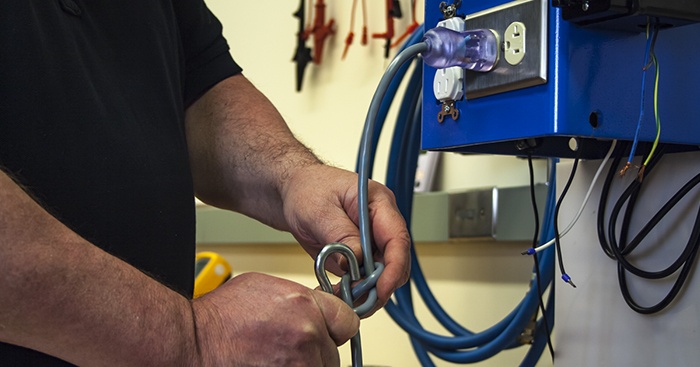Medical Design. Quality. Safety.
Posted on 5/7/18 11:39 AM

Every day can be critical in a medical setting. Because one of the most important elements is safety, it is crucial to design hospital-grade products with quality components.
Quality and Safety
Quality starts with the manufacturer before the product is even available to the consumer. Various medical component and equipment standards require specific tests to be conducted to ensure quality and safety. There are agencies who test and certify that electrical products/equipment meet specific standards. It is the responsibility of the manufacturer to ensure each product passes safety testing.
Tests Conducted per UL 817
North American hospital-grade power cords and cord sets are one of the product lines that are manufactured at Interpower. One of the standards that Interpower follows is UL 817 “Standard for Safety—Cord Sets and Power-Supply Cords.” Within this standard, a number of tests are required. Some of those tests are conducted at Interpower. These include: the Conductor Secureness Test, the Insulation Resistance Test, the Jacket Retention Test, the Security of Blades and Pins Test, the Abrupt Pull Test, the Rotary Pull Test, and the Abrupt Removal Test.
Conductor Secureness Test
This test checks the connection between the conductor of a flexible cord and an element (male blade or pin or female contact). [UL 817, Section 11.1]
Insulation Resistance Test
This test ensures the insulation resistance of a fitting is not less than 100 megohms between specific parts to make sure the insulation does not conduct electricity. [UL 817, Section 11.5]
Jacket Retention Test
This test checks to make sure that no fillers, separators, insulation, or bare conductors are visible at the point where the cord enters the fitting. [UL 817, Section 11.10]
Security of Blades and Pins Test
This test checks to ensure that each blade or pin is secure. [UL 817, Section 12.1]
Abrupt Pull Test
This test is to ensure that a pull force on a cord doesn’t damage the internal plug terminations. It checks to make sure there is no loss of electrical continuity during and at the end of the test. [UL 817, Section 12.5]
Rotary Pull Test
This test checks to ensure there is no displacement of conductors, conductor insulation or the outer jacket of a flexible cord exceeding 0.8mm when a rotary cord motion is applied for two hours with a 10-pound weight applied. [UL 817, Section 18.2.3]
Abrupt Removal Test
This test checks to ensure there is no displacement of conductors, conductor insulation or the outer jacket of a flexible cord exceeding 0.8mm when a 10-pound weight is attached to a cord and dropped while the plug and cord is attached to a receptacle. [UL 817, Section 18.2.4]
Agency Certification
Agency certification, such as Underwriters Laboratories (UL), includes testing the actual parts and making inspections at the manufacturer’s facility where the parts are made. “As part of the UL’s follow-up inspection, it is required that a Field Representative periodically visit the factory and select, for test or examination or both, samples of production made since the last inspection visit of the products covered,” explained Joe Caligiuri, Product Compliant Specialist at Interpower.
Additional Resources
For more information on hospital-grade products offered by Interpower, see Hospital-Grade Products, More Information on Hospital-Grade Products, and the Featured Product page.
Interpower offers free technical support. For further assistance, please see Interpower’s contact information below.
Topics: testing, Hospital-Grade Products, Designing for North America




